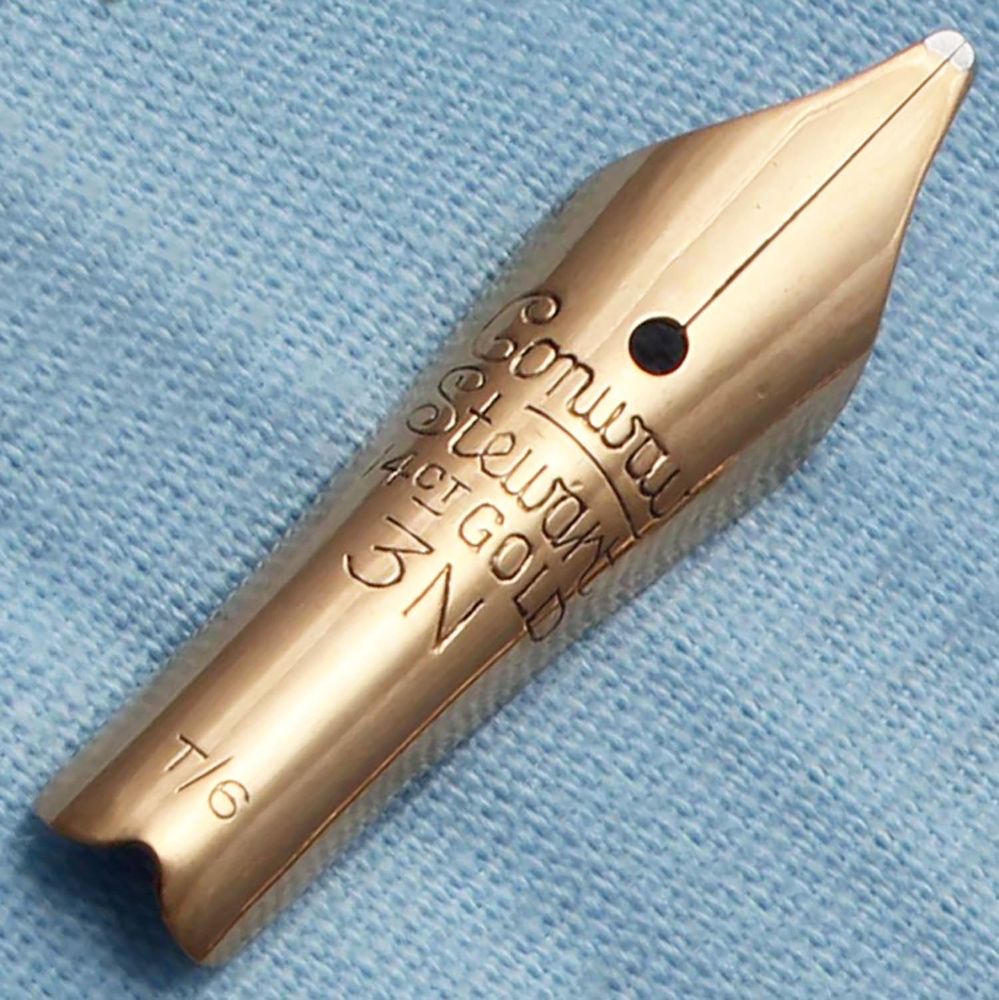
Conway Stewart
All the nibs available have been sorted by manufacturer. Select one of the categories below to see our current stocks. Please note that all nibs have been cleaned and the tips have been aligned. However when fitting a replacement nib variations in the feed and section may mean that the nib has to be adjusted to get the correct flow and it also may need to be smoothed to correct any minor imperfections. This is perfectly normal when fitting a replacment nib and cannot be avoided. If you are in any doubt we offer a fitting service for all nibs so please get in touch with us via email for a quote.
Please see below for a quick guide to nib widths, definitions of flex and a description of Oblique and Italic nibs.
The width of the line that any nib puts down onto the paper can vary quite considerably. The type and consistency of the ink used is an important factor as is the type of paper and the surface finish. Uncoated papers allow the lighter inks to soak in and bleed giving a wider line than you would expect whilst a heavily pigmented ink on a coated paper can produce the opposite effect. Add to this heady mix the effect of each individuals writing style and the pressure applied to the nib and you can begin to understand the complexities of this subject!
However in general, line widths for the nibs in this section will be as follows;
Extra Fine: 0.2 - 0.3mm
Fine: 0.3 - 0.5mm
Medium: 0.5 - 0.7mm
Broad: 0.7 - 0.9mm
Double Broad: 0.9 - 1.3mm
Triple Broads: 1.4 - 1.7mm.
Flexibility in nibs is another opportunity for subjective description! I try and adopt the following guidelines;
The flexibility of a nib is determined by the difference in line width from writing with light pressure and writing with enough pressure to open up the tines.
If there is no difference in the line width then the nib is deemed to be Stiff.
If there is a difference of one grade (ie Fine to Medium or Medium to Broad, as defined above) then the nib is described as Semi Flex.
If there is a difference of two grades (ie Extra Fine to Medium or Medium to Double Broad, as defined above) then the nib is described as Full Flex.
Nibs with a variation of three grades are rare and highly desirable, I term these as Megaflex nibs!
Italic nibs are shaped such that the horizontal lines are a lot thicker than the vertical line, this gives that typical Italic styling to your writing and I think it is very attractive.
Finally Oblique nibs are sloped upwards from the bottom left of the nib to the top right when viewed from above. These are termed Left Oblique and are the same shape as your left foot. Right Obliques are less common. Left Oblique nibs can help people who hold the pen at a sharper angle to the paper as they allow more of the nib tip to be in contact with the paper. Some left handers find them very useful but they are not specifically a left handers nib, many right handers also prefer oblique nibs.